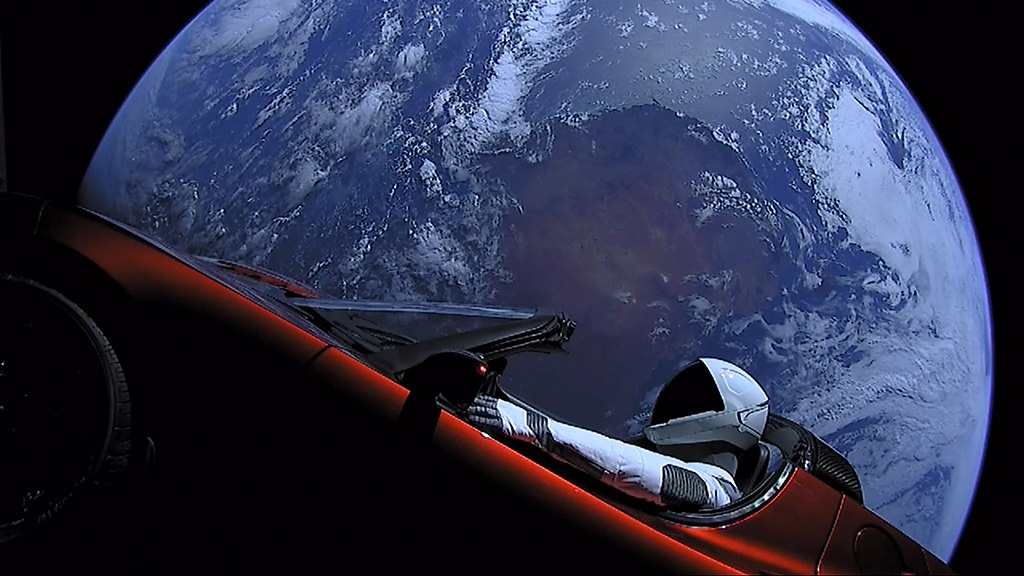Starman, Star Tesla, starman roadster info chemical Man
The Falcon Heavy test flight (also known as Falcon Heavy Demonstration Mission) was the first attempt by SpaceX to launch a Falcon Heavy rocket on February 6, 2018 at 20:45 UTC. The successful test introduced the Falcon Heavy as the most powerful rocket in operation, producing five million pounds-force (22 MN) of thrust and having more than twice the lift capacity of the NASA Space Shuttle launch system.
In April 2011, SpaceX was planning for a first launch of Falcon Heavy from Vandenberg Air Force Base on the West Coast in 2013. It refurbished Launch Complex 4E at Vandenberg AFB to accommodate Falcon 9 and Heavy. The first launch from the Cape Canaveral East Coast launch complex was planned for late 2013 or 2014.
Due partly to the failure of SpaceX CRS-7 in June 2015, SpaceX rescheduled the maiden Falcon Heavy flight in September 2015 to occur no earlier than April 2016, but by February 2016 had postponed it again to late 2016. The flight was to be launched from the refurbished Kennedy Space Center Launch Complex 39A.
In August 2016, the demonstration flight was moved to early 2017, then to summer 2017, to late 2017 and to January 2018.
At a July 2017 meeting of the International Space Station Research and Development meeting in Washington, D.C., SpaceX CEO Elon Musk downplayed expectations for the success of the maiden flight:
There's a real good chance the vehicle won't make it to orbit ... I hope it makes it far enough away from the pad that it does not cause pad damage. I would consider even that a win, to be honest.
Musk went on to say the integration and structural challenges of combining three Falcon 9 cores were much more difficult than expected. The plan was for all three cores to land back on Earth after launch.
Objectives
Last transmitted view en route away from Earth
The Falcon Heavy maiden flight was intended to accomplish several objectives:
launch the Falcon Heavy from the pad through the atmosphere, including Max Q flight phase;
separate the side booster cores from the continuing first stage center core and upper stage
return the two side boosters to Cape Canaveral and land them simultaneously at Landing Zones 1 and 2
separate the center core and light the upper stage to orbit insertion
land the central first stage booster core on an autonomous spaceport drone ship, the Of Course I Still Love You, in the Atlantic Ocean
relight the upper stage to orbit in the van Allen belts for several hours to show radiation resistance
relight the upper stage again to put the payload into its heliocentric orbit, demonstrating a lifetime for the upper stage suitable for geosynchronous orbit insertion.
recover the payload fairing.
The purpose of including the Roadster on the maiden flight was to demonstrate that the Falcon Heavy can launch payloads as far as the orbit of Mars, and it exceeded its projected route by extending its aphelion to near the asteroid belt beyond Mars (with a perihelion at the level of Earth's orbit), but did not test or demonstrate the separation of the second stage and a payload.


Leave a comment